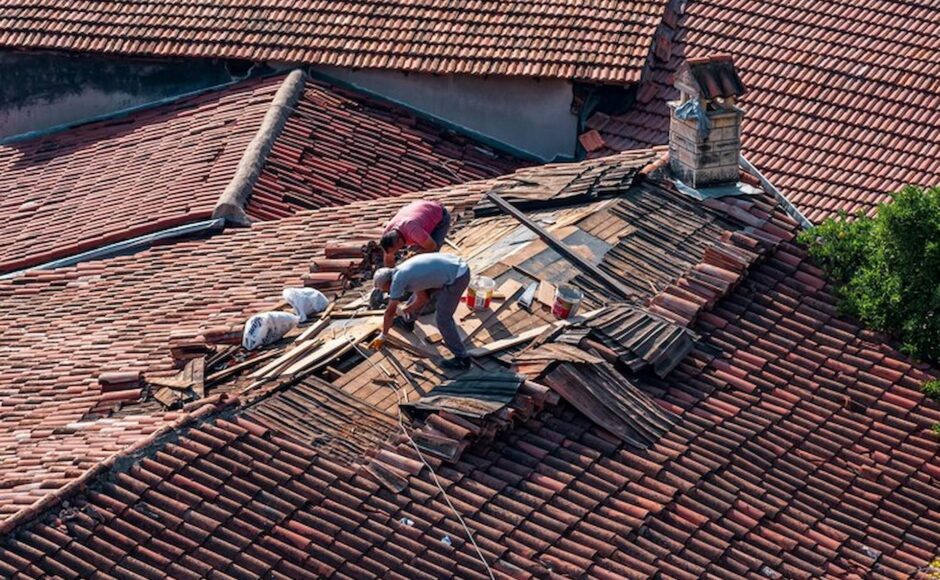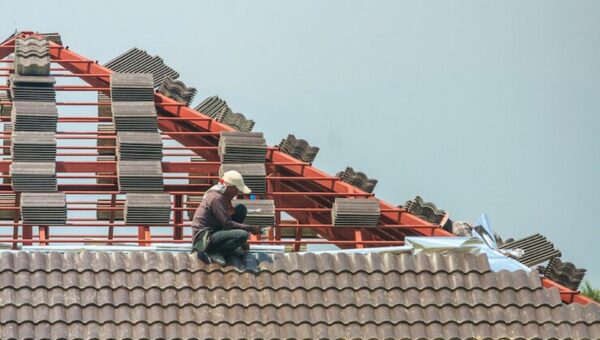Welcome back, homeowners! Let’s talk about something that’s not always top of mind but essential for your home’s safety: your roof. A well-maintained roof shields your home from the elements, but it can face damage over time. This article delves into common roof issues and insider tips on repairs. Let’s uncover the secrets to fixing your roof!
Damaged or Missing Shingles
One of the most conspicuous forms of roof damage is the presence of damaged or absent shingles. Adverse weather, subpar installation, or natural wear and tear can lead to shingles cracking, warping, or even dislodging over time.
If you spot damaged or missing shingles, it’s crucial to take prompt action to prevent leaks and additional harm. Begin by conducting a thorough roof inspection to detect any signs of damage. Run your hand gently over the surface to check for loose or raised shingles. If you come across any damaged shingles, you can effortlessly replace them by following these steps.
Commence by raising the edges of the impaired shingle using either a flat pry bar or a shingle removal tool.
- Employ a hammer to delicately extract the nails, securing the damaged shingle in position.
- Gently slide the new shingle into place, ensuring proper alignment with the existing shingles.
- Secure the new shingle by driving new nails into the designated slots.
Keep in mind the importance of using matching shingles for a consistent look. Contact a professional for assistance if you need more certainty about shingle replacement. There are numerous professionals ready to assist you with installing and refurbishing your home’s roof. Roofing Leighton Buzzard is among these expert service providers, offering the expertise you need to achieve your desired roof installation.
Leaks and Water Damage
Leaky roofs can cause significant and costly damage to your home if left untreated. To locate a roof leak, examine your attic for any signs of water staining or dampness. Additionally, inspect your roof for cracked or damaged flashing, which can often be a source of leaks. Here’s what you can do to repair leaks:
- Consider applying a patch to the affected area if the leak is localised. Clean and dry the surface thoroughly, and use roofing cement or a similar product to create a watertight seal.
- If the leak results from damaged or deteriorated materials, such as underlayment or sheathing, you may need to remove and replace those sections.
- Ensure that your roof has proper moisture barriers installed to prevent future water damage.
- Regular roof inspections can help detect leaks early, allowing for timely repairs and preventing further damage.
Roof Punctures and Holes
Punctures or holes in your roof can occur for various reasons, such as fallen branches or pesky critters seeking entry. If left unaddressed, they can lead to water infiltration, further damage, and even structural issues. Here’s how you can patch and seal roof punctures:
- Start by cleaning the area around the puncture to remove any debris or loose materials.
- Apply roofing cement or sealant generously to the damaged area, ensuring complete coverage.
- If the puncture or hole is larger, you may need to use a patch from similar roofing materials to cover the damaged section.
- After applying the patch, seal the edges with a roofing cement to ensure a water-tight and durable repair.
However, remember that more severe roof damage, like extensive punctures or sagging, may require professional attention and potential structural repairs. In such cases, it’s always best to contact a qualified roofer.
Gutter Problems
While not technically roof damage, gutter issues can lead to serious roof damage if ignored. Clogged or misaligned gutters can result in water overflow and eventually cause water to seep under your roof, leading to leaks and water damage. Here’s what you can do to maintain functional gutters:
- Regularly clean out your gutters to remove leaves, debris, and other obstructions that impede proper water flow.
- Inspect your gutters for any signs of leaks or holes. Use a gutter sealant or replace the damaged section if you identify any.
- Check the alignment of your gutters. Ensure they are pitched correctly to allow water to flow towards the downspouts.
- Consider installing gutter guards to prevent debris accumulation and reduce the frequency of gutter maintenance.
Maintaining properly functioning gutters protects your roof and helps preserve your home’s structural integrity.
Flashing Issues
Flashing refers to the metal strips or sheets installed in vulnerable areas of your roof, such as around chimneys, skylights, or vents, to prevent water infiltration. Over time, flashing can become damaged, resulting in leaks. Here’s how you can address flashing issues:
- Carefully inspect the flashing for any signs of cracks, rust, or damage. If you notice any problems, remove the damaged flashing using a pry bar or utility knife.
- Install new flashing, ensuring it overlaps with the adjoining materials and creates a watertight seal.
- Consider applying roofing cement or similar sealant to secure the flashing further and prevent any potential leaks.
Properly installed and maintained flashing protects your home from water damage in vulnerable areas.
Ice Dams and Snow Buildup
For those in colder regions, ice dams and snow buildup on your roof can pose significant problems. Ice dams form when snow melts, refreezes at the roof’s edges, and prevent proper drainage. Addressing ice dams and snow buildup involves a combination of prevention and removal techniques:
- Ensure adequate insulation and ventilation in your attic to minimise heat loss and ice dam formation.
- Use a roof rake to carefully remove snow from your roof after heavy snowfall, being cautious not to damage the shingles.
- If ice dams have already formed, consider using heat cables to melt the ice and create paths for water to drain.
- Consult with a professional to evaluate your insulation and ventilation needs if ice dams remain a recurrent issue.
Preventing ice dams and effectively managing snow buildup can save you from potential roof leaks and extensive water damage.
Sagging Roof or Structural Problems
A sagging roof is a potentially serious problem that requires immediate attention. It usually indicates underlying structural issues that threaten the integrity of your entire home. While minor roof sagging can occur due to natural settling, significant sagging or structural problems necessitate professional intervention. Here’s what you should do:
Image courtesy of coldstreamexteriors.com via Google Images
- Contact a qualified professional to inspect the issue if you notice signs of a sagging roof, such as visible dips or unevenness.
- Professional contractors will assess your roof’s structural integrity and stability and recommend appropriate repairs or reinforcements.
- Please refrain from addressing structural issues alone, as it can be hazardous and potentially worsen your damage’s safety.
Always prioritise safety when dealing with sagging roofs and structural concerns. Seek professional assistance to safeguard both you and your family.
Conclusion
Addressing common roof damage is a natural aspect of homeownership, but you can effectively manage these issues with the proper knowledge and a proactive approach. Regularly inspect your roof for damage, address problems promptly, and engage professionals when needed. By giving your roof the care it needs, you’re preserving your home’s structural integrity and ensuring a secure and comfortable living environment for years to come. Happy roofing!




